Heute gibt es gleich sechs verschlüsselte Postkarten und zusätzlich noch einen rätselhaften Tweet der britischen Zentralbank.
English version (translated with DeepL)
Blog-Leser John Haas aus Österreich hat mich dankenswerterweise auf einen Tweet aufmerksam gemacht, den die Bank of England kürzlich veröffentlicht hat:
Ich weiß leider nicht, welcher Countdown hier begonnen hat und was angekündigt werden soll. Vermutlich steht jede Binärzahl in dieser Nachricht für einen Buchstaben. Kann ein Leser die Nachricht und/oder den Hashtag entschlüsseln? Vielleicht findet sich die Lösung auch in den über 800 Kommentaren, die dieser Tweet bereits erhalten hat. Zugegebenermaßen habe ich mir diese nicht alle durchgelesen.
Und dann möchte ich noch darauf aufmerksam machen, dass wieder einmal ein Cipherbrain-Leser etwas Interessantes veröffentlicht hat: David Scheers aus den Niederlanden hat ein Buch mit dem Titel “Zealous with Language and Ciphers, Shorthand, ciphers and universal language around the 17th century” geschrieben. Es ist jetzt auf Amazon erhältlich. Ich werde darin zitiert, was mich sehr freut. Ich habe das Buch noch nicht gelesen, aber das, was ich bisher gesehen habe, sieht sehr interessant aus.
Mark Baldwin’s Postkarten
Kommen wir nun zum nächsten Thema. Der Brite Mark Baldwin, den ich über das ICCH-Forum kennen gelernt habe (am Samstag um 17 Uhr gibt es dort übrigens meinen nächsten Vortrag) hat mir bereits letztes Jahr einige verschlüsselte Postkarten zur Verfügung getellt. Über ein paar davon habe ich bereits gebloggt, und meine Leser waren wieder einmal sehr erfolgreich darin, sie zu lösen. Allerdings gehören noch sechs weitere Karten zu dieser Sammlung, die ich bisher noch nicht vorgestellt habe. Das möchte ich heute tun.
Postkarte 1
Fangen wir einfach an. Die Nachricht auf folgender Karte sollte auch für mittelmäßig begabte Codeknacker zu lösen sein:
Pastkarte 2
Deutlich schwieriger sieht die folgende Postkarte aus Milwaukee (USA) aus dem Jahr 1911 aus:
Interessant finde ich, dass als Stadt “City” angegeben ist. Dies bedeutet wohl, dass die Karte in Milwaukee verschickt wurde und der Empfänger ebenfalls dort wohnte. Der Vorname “Antonija” könnte kroatisch sein. Weiß jemand, was “Spostwana” (?) bedeutet?
Postkarte 3
Weiter geht es mit einer Karte, die mit einer Variante der Pigpen-Chiffre verschlüsselt ist.
Die Empfängerin (wie in fast allen Fällen eine “Miss”, also eine unverheiratete Frau) lebte in Magor in der Nähe von Cardiff (Wales).
Postkarte 4
Im Jahr 1908 erhielt eine weitere unverheiratete Frau in Mile End (dies ist ein Stadtteil von London) folgende Postkarte:
Wörter wie “evol”, “ta” oder “leef” deuten an, welche Art der Verschlüsselung hier wohl verwendet worden ist.
Postkarte 5
Wir bleiben in London. Im Stadtteil South Kensington wohnte anscheinend die unverheiratete A. Reed, die folgende Karte empfing:
Postkarte 6
Zum Schluss geht es nach Leighton-Buzzard nördlich von London. Die folgende Postkarte ging erneut an eine unverheiratete Frau, eine Miss Emery:
Rätsel über Rätsel
Ich würde mich freuen, wenn es mit Hilfe meiner Leser gelänge, diese Karten in den nächsten Tagen zu dechiffrieren. In einigen Fällen dürfte dies nicht besonders schwierig sein. Die Karte aus Milwaukee sieht dagegen nicht ganz so einfach aus. Ich wünsche auf jeden Fall viele Erfolg.
Follow @KlausSchmeh
Further reading: Ein einzigartiger kryptologischer Schatz: Die 44 verschlüsselten Postkarten eines Musikers
Linkedin: https://www.linkedin.com/groups/13501820
Facebook: https://www.facebook.com/groups/763282653806483/

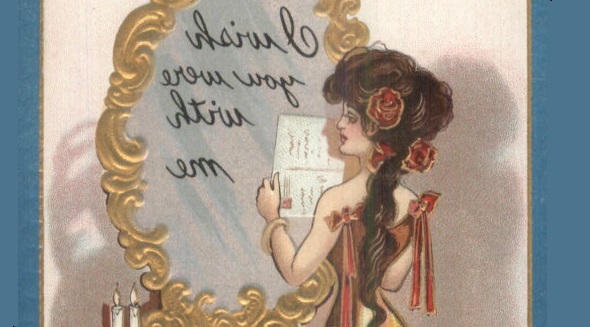


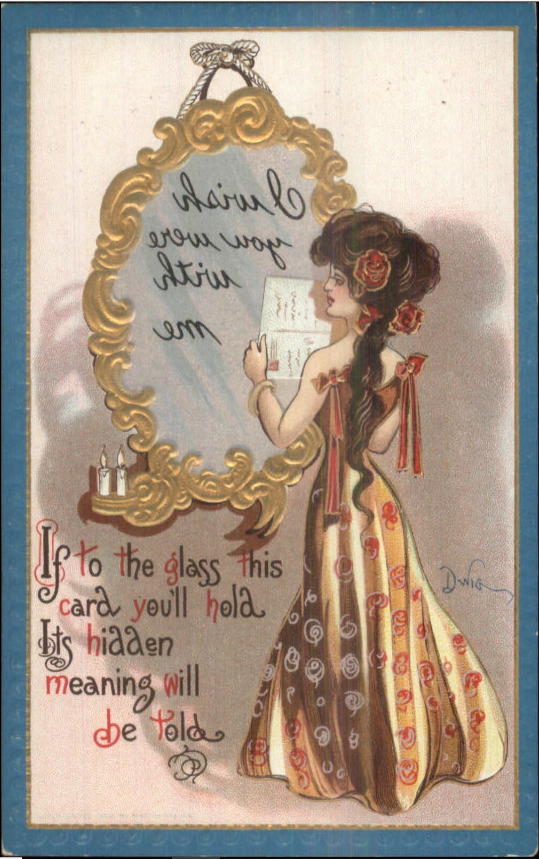
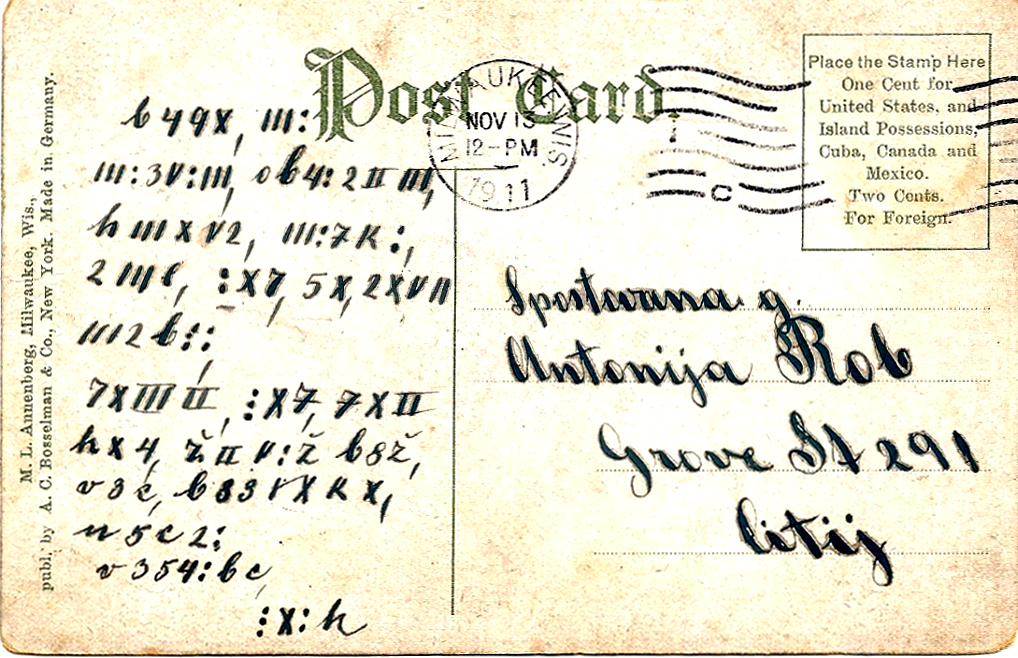
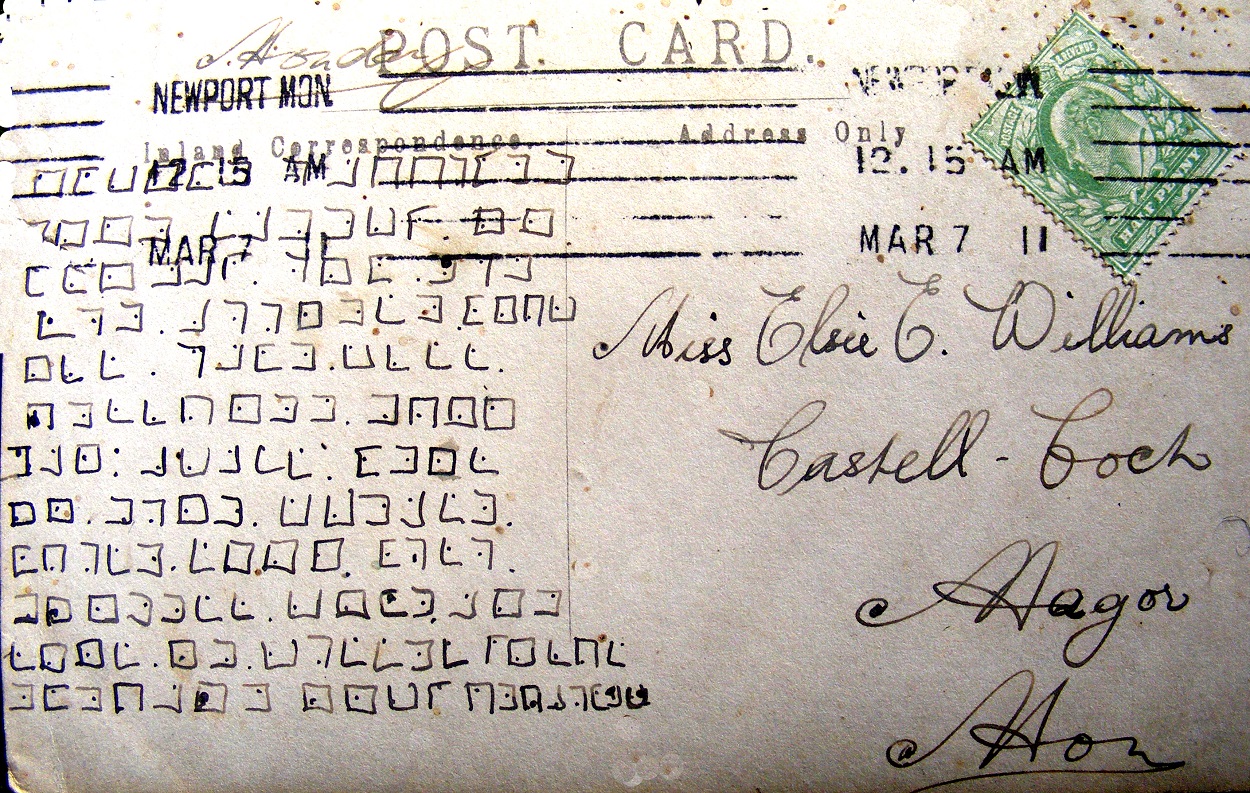
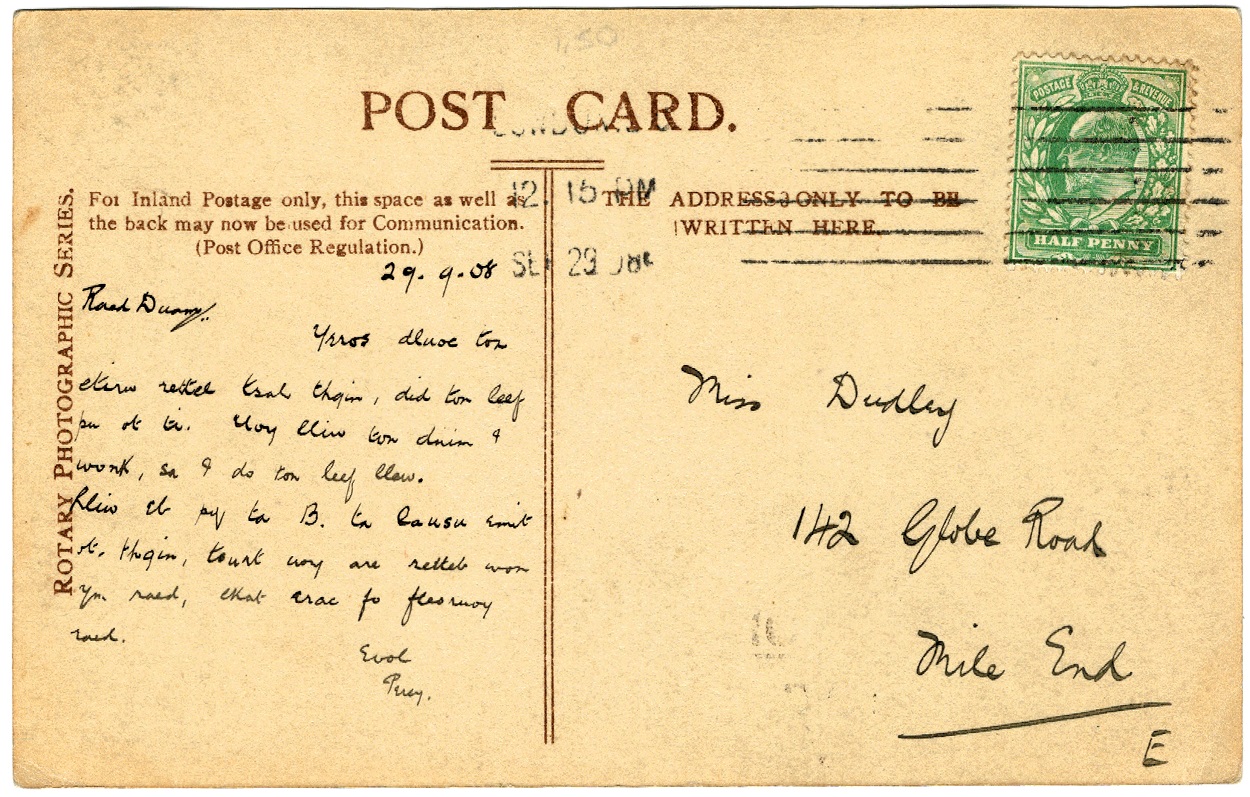

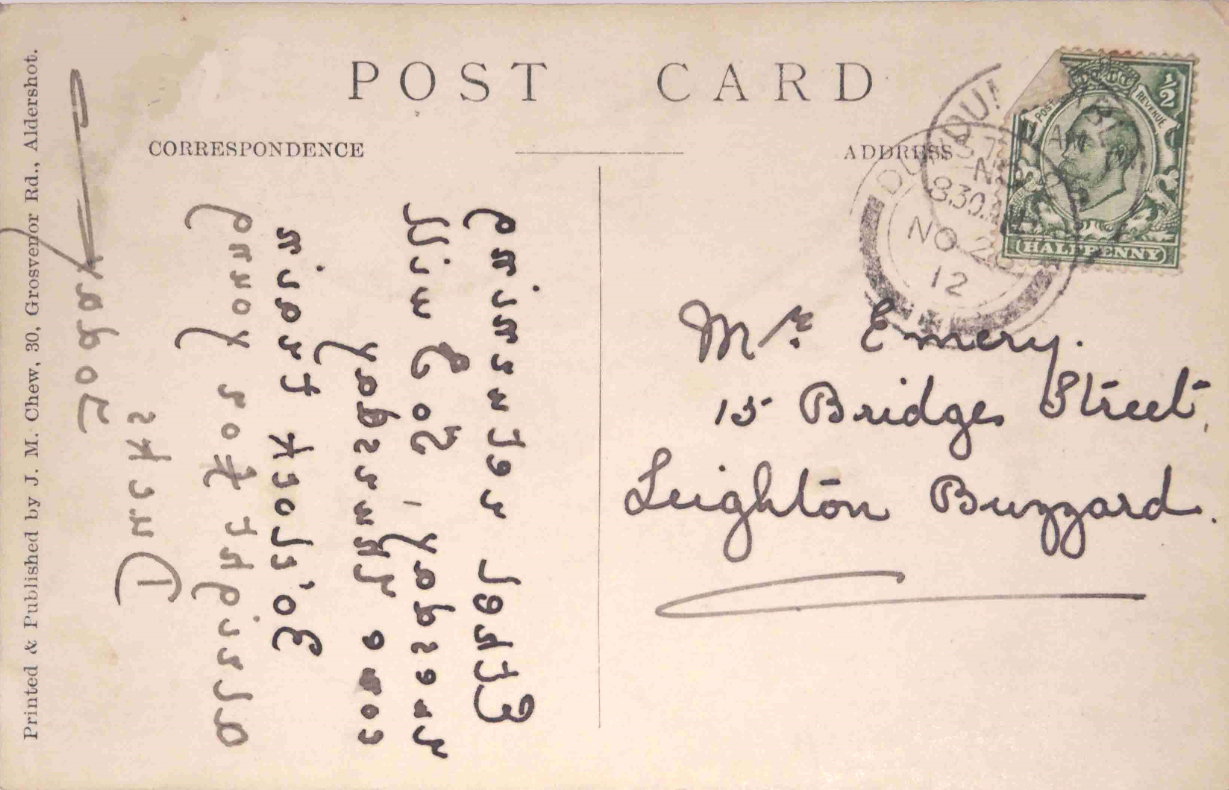

Kommentare (18)